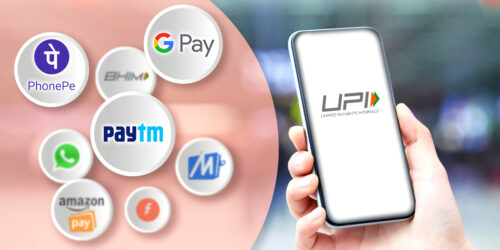
Payment methods are crucial in today’s modern world, as so many transactions are being performed without the use of cash. The Indian government has introduced a solution to that, called Unified Payments Interface or UPI in short. It represents a system that combines different bank accounts into a single smartphone app. All of that is with the idea to unify and simplify digital payments for customers in India. It all started back in 2009 when the Indian government created the National Payment Corporation of India or NPCI to create a synergy of all payment methods into a single format. The mission was to create a huge, safe, effective, and appropriate digital infrastructure intended for public use. And the response was amazing. What is there for UPI in the future?
UPI Payments in the Casino Industry
With the standard payment methods, you will get trapped in waiting for a transfer of your money. No matter if it is a deposit or withdrawal. Due to the main advantage of this system, which is instant money transfer, UPI payments are also available in the casino industry, and how can they not be? When you play online, you don’t want to be held back by the procedures and protocols. That is where UPI shines. It can transfer your funds instantly in just a few steps, and besides that, it is very secure for players. As a government project, safety was one of the main aspects while developing it, and that is why it is encrypted and regulated. An ideal tool for online casinos and their players.
UPI Is Extremely Popular in India According to All the Numbers
At the moment, UPI is creating a sort of digital payment revolution in India. Due to its many benefits, people are turning to this simple and efficient way to complete their transactions and that is shown through the numbers. In the retail segment in the past year and the first half of 2023, a staggering 75 percent of total transactions are done by UPI. Due to this growth, predictions are stating that in the next five years, we will see a rise from 75 to 90 percent. And that is not the most shocking piece of data we have for you. Very soon we will see 1 billion financial transactions made with UPI in a single day.
How People Can Use UPI for Any Transaction
As we already mentioned, the combined work done by NPCI, the Reserve Bank of India, and the Indian Banks Association (IBA) created a mobile payment transfer interface to simplify funds allocation. The idea is that a person needs to possess a valid bank account from the listed banks in India. After that step, they need to possess a mobile phone and an internet connection, which hopefully people will not be left without any time soon. Then they need to create a UPI ID and UPI PIN. After that, upon login at their bank app or external Payment Service Provider (PSP), they can make money transactions. Now that we know how to use UPI, let us see what the future holds for this digital payment method.
UPI 2.0 Includes Digital Invoices and QR Codes
With UPI 2.0, users can provide their clients with a digital invoice along with a collection request, making it easier for them to comprehend why the request is being made and boosting the number of side transactions involving payment requests. Rapid response (QR) codes, often utilized as a payment technique to promote digital payments in small enterprises, are another fascinating feature. There are reported occurrences of scams utilizing QR transactions in several international locations. The QR function intends to address these problems and promote offline merchant payments by more successfully confirming the recipient’s identity.
UPI 2.0 Provides New Options for Credits
Using UPI 2.0 could be quite advantageous for financial institutions, particularly when acquiring small-ticket loans. Institutions may employ a cyclical strategy to generate collect requests. The monthly Equated Monthly Installment (EMI) report may also be automatically generated and sent to the customer coupled with such collect requests. The customer can examine the request’s details and permit urgent EMI repayment. Although UPI 2.0 delivers several enhancements that will increase the safety of transactions and simplify customer payments, the inclusion of some extra features might increase popularity.
UPI Credit Card and New Important Updates
The Reserve Bank of India claims that the UPI card could soon become linked to UPI, broadening its application. Transactions will be easier to make using QR codes excluding a Point of Sale (PoS) device thanks to a UPI credit card. Besides this, the most notable new promotions will be the ability to connect an overdraft account, one-time mandate, digital invoices in the inbox, and signed intent and QR. As we can see, so many new things that will include UPI even more in our everyday lives, especially from the perspective of financial transactions.
Conclusion
In India, the use of digital payment systems is growing swiftly and customers’ dependence on these systems is growing, which makes it necessary to establish an acceptable regulatory framework. There is still a necessity to develop a strong regulatory framework that would cover both payment flows and procedural issues, even though the PSS Act’s scope permitted the enactment of the UPI Procedural Guidelines, a document meant to control the UPI payment system in India. Certainly, all these new features will strengthen the bond between the existing UPI users and attract new ones. It is reassuring to see the improvements being made to the UPI, as the predictions are telling us of its increased usage in the years that come. The government had a project in mind, which tied all the relevant factors and banks, and we are seeing the fruits of that labor, to the delight of the consumers in India.
Read More:
NAFED and Wendor Unite to Promote Millet-Based Products Across India: One Vending Machine at a Time
































